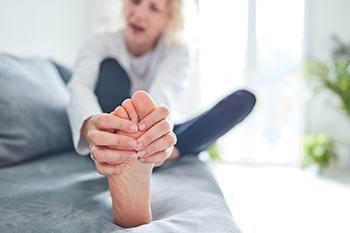
The feet endure the weight of the body, and many people suffer from foot pain for various reasons. The feet are responsible for walking, running, and balancing the body, and it is beneficial to wear shoes that fit properly, possibly helping to prevent potential foot conditions. One of the most common foot ailments is known as flat feet, and may be treated by wearing custom-made orthotics. Heel pain may indicate plantar fasciitis or a heel spur, and this may come from standing on hard or uneven surfaces for most of the day. Some people have toe pain which may occur from placing excess stress on the top part of the foot while exercising. A sprain that suddenly happens at the bottom of the big toe is known as turf toe. This can occur as a result of the big toe being bent beyond its normal range of motion. Any type of foot pain requires a visit to the podiatrist, and it is suggested that you contact this type of doctor who can determine the cause and offer correct treatment solutions.
Foot Pain
Foot pain can be extremely painful and debilitating. If you have a foot pain, consult with Dr. Steven Shlonsky from Louisville, Kentucky. Dr. Shlonsky will assess your condition and provide you with quality foot and ankle treatment.
Causes
Foot pain is a very broad condition that could be caused by one or more ailments. The most common include:
Diagnosis
To figure out the cause of foot pain, podiatrists utilize several different methods. This can range from simple visual inspections and sensation tests to X-rays and MRI scans. Prior medical history, family medical history, and any recent physical traumatic events will all be taken into consideration for a proper diagnosis.
Treatment
Treatment depends upon the cause of the foot pain. Whether it is resting, staying off the foot, or having surgery; podiatrists have a number of treatment options available for foot pain.
If you have any questions, please feel free to contact our office located in Louisville, KY . We offer the newest diagnostic and treatment technologies for all your foot care needs.

If an individual does not take proper care of the bones in the feet, then they could be subject to many different conditions. For example, bones may break or fracture. They could even be subject to a stress fracture. In particular, the bones in the feet might also be dislocated. A dislocation can form when the bones in the joint are completely separate. As a result, the bones can move out of their natural position. This dislocation phenomenon can occur in the bones of the toes. If there is a case of a dislocated toe, then a medical professional might treat this in several different ways. For example, the dislocated toe might be addressed by wearing a splint or cast. The affected toe may also be addressed by buddy-taping it to another toe. If you are someone that is concerned about dislocated toes, it is suggested that you are under the care of a podiatrist who will be able to help you with the correct treatment options.
If you have any concerns about your feet, contact Dr. Steven Shlonsky from Louisville, Kentucky. Dr. Shlonsky can provide the care you need to keep you pain-free and on your feet.
Biomechanics in Podiatry
Podiatric biomechanics is a particular sector of specialty podiatry with licensed practitioners who are trained to diagnose and treat conditions affecting the foot, ankle and lower leg. Biomechanics deals with the forces that act against the body, causing an interference with the biological structures. It focuses on the movement of the ankle, the foot and the forces that interact with them.
A History of Biomechanics
Modern technological improvements are based on past theories and therapeutic processes that provide a better understanding of podiatric concepts for biomechanics. Computers can provide accurate information about the forces and patterns of the feet and lower legs.
Understanding biomechanics of the feet can help improve and eliminate pain, stopping further stress to the foot.
If you have any questions please feel free to contact our office located in Louisville, KY . We offer the newest diagnostic and treatment technologies for all your foot and ankle needs.
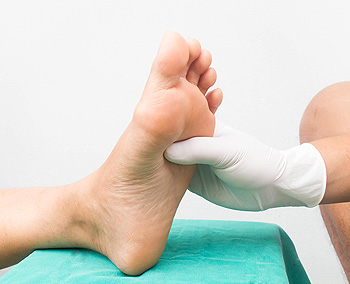
Most people associate diabetes with a blood sugar and insulin imbalance, and that is certainly true. But diabetes can also affect the nervous system, causing a secondary condition termed neuropathy. This is nerve damage that restricts the ability of the peripheral nervous system to send accurate messages to the extremities. The effects of neuropathy in diabetics are commonly experienced in the feet. Symptoms often include a feeling of pins and needles in the feet or toes, pain that is felt especially at night, and numbness. The result of this nerve damage can be the cause of even more complications, such as foot infections and ulcers. A common warning sign is wounds that do not seem to heal. If these are not attended to promptly, they can cause infections and turn into gangrene. Checking the feet daily is paramount in preventing further damage. If you have diabetes, it is a good idea to have regular checkups with a podiatrist who is trained to deal with the effects of diabetes on the feet.
Diabetic foot care is important in preventing foot ailments such as ulcers. If you are suffering from diabetes or have any other concerns about your feet, contact Dr. Steven Shlonsky from Louisville, Kentucky. Dr. Shlonsky can provide the care you need to keep you pain-free and on your feet.
Diabetic Foot Care
Diabetes affects millions of people every year. The condition can damage blood vessels in many parts of the body, especially the feet. Because of this, taking care of your feet is essential if you have diabetes, and having a podiatrist help monitor your foot health is highly recommended.
The Importance of Caring for Your Feet
Patients with diabetes should have their doctor monitor their blood levels, as blood sugar levels play such a huge role in diabetic care. Monitoring these levels on a regular basis is highly advised.
It is always best to inform your healthcare professional of any concerns you may have regarding your feet, especially for diabetic patients. Early treatment and routine foot examinations are keys to maintaining proper health, especially because severe complications can arise if proper treatment is not applied.
If you have any questions please feel free to contact our office located in Louisville, KY . We offer the newest diagnostic and treatment technologies for all your foot and ankle needs.
Diabetes can cause two problems that can potentially affect the feet: Diabetic neuropathy and Peripheral Vascular Disease. Diabetic neuropathy occurs when nerves in your legs and feet become damaged, which prevents you from feeling heat, cold, or pain. The problem with diabetic neuropathy is that a cut or sore on the foot may go unnoticed and the cut may eventually become infected. This condition is also a main cause of foot ulcers. Additionally, Peripheral vascular disease also affects blood flow in the body. Poor blood flow will cause sores and cuts to take longer to heal. Infections that don’t heal do to poor blood flow can potentially cause ulcers or gangrene.
There are certain foot problems that are more commonly found in people with diabetes such as Athlete’s foot, calluses, corns, blisters, bunions, foot ulcers, ingrown toenails, and plantar warts. These conditions can lead to infection and serious complications such as amputation. Fortunately, proper foot care can help prevent these foot problems before they progress into more serious complications.
Each day you should wash your feet in warm water with a mild soap. When you finish washing your feet, dry them carefully especially between your toes. You should also perform daily foot inspections to ensure you don’t have any redness, blisters, or calluses. Furthermore, if you are diabetic, you should always wear closed-toed shoes or slippers to protect your feet. Practicing these tips will help ensure that your feet are kept healthy and away from infection.
If you have diabetes, contact your podiatrist if you have any of the following symptoms on your feet: changes in skin color, corns or calluses, open sores that are slow to heal, unusual and persistent odor, or changes in skin temperature. Your podiatrist will do a thorough examination of your feet to help treat these problematic conditions.

Walking seems so simple and is taken for granted by most of us. We do not think that with each step we take, there is a complex set of actions required by our unique arrangement of bones, tendons, and ligaments that are put into motion. The main tendon that is required to move the foot is the Achilles tendon. This tendon connects the calf muscle to the hindfoot bone. Ligaments are bands of elastic tissue that are between bones. To move, muscles require stimulation from nerves that feed into the foot. The plantar fascia, the connective tissue running along the bottom of the foot, acts as a springboard for stepping. The largest bone in the foot, which is known as the calcaneus, forms the heel bone and is vital for foot balance and strength. The forefoot’s five metatarsal bones lead to the phalanges that make up the toes of the foot. Few people have knowledge of how our feet work to get us from place to place, but everything is put together to make this happen smoothly. Most of us only learn some of the biomechanics of the feet when something goes amiss. If you would like to learn more about how feet are put together and function, make an appointment with a podiatrist who can answer any questions you may have.
If you have any concerns about your feet, contact Dr. Steven Shlonsky from Louisville, Kentucky. Dr. Shlonsky can provide the care you need to keep you pain-free and on your feet.
Biomechanics in Podiatry
Podiatric biomechanics is a particular sector of specialty podiatry with licensed practitioners who are trained to diagnose and treat conditions affecting the foot, ankle and lower leg. Biomechanics deals with the forces that act against the body, causing an interference with the biological structures. It focuses on the movement of the ankle, the foot and the forces that interact with them.
A History of Biomechanics
Modern technological improvements are based on past theories and therapeutic processes that provide a better understanding of podiatric concepts for biomechanics. Computers can provide accurate information about the forces and patterns of the feet and lower legs.
Understanding biomechanics of the feet can help improve and eliminate pain, stopping further stress to the foot.
If you have any questions please feel free to contact our office located in Louisville, KY . We offer the newest diagnostic and treatment technologies for all your foot and ankle needs.
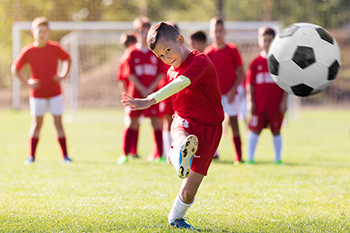
There is an area that connects the Achilles tendon and the plantar fascia to the heel. It is called the growth center, and the medical term for this is known as the calcaneal apophysis. It is fully developed at approximately 12 to 14 years old, as it fuses to the bone. If the heel undergoes direct impact, resulting in excessive tension on the Achilles tendon and plantar fascia, it may result in Sever’s disease. This condition generally affects children and young teenagers between the ages of 9 and 13, and can cause considerable heel pain. Children who frequently participate in running and jumping activities may be prone to developing Sever’s disease. Mild relief may be found when the activity is temporarily stopped that caused the condition, and the foot is elevated and rested. It is beneficial to perform specific stretches that may help to accelerate the healing process. If your child has heel pain, please schedule an appointment with a podiatrist who can confirm the diagnosis of Sever's disease, and treat it accordingly.
Sever's disease often occurs in children and teens. If your child is experiencing foot or ankle pain, see Dr. Steven Shlonsky from Louisville, Kentucky. Dr. Shlonsky can treat your child’s foot and ankle needs.
Sever’s Disease
Sever’s disease is also known as calcaneal apophysitis, which is a medical condition that causes heel pain I none or both feet. The disease is known to affect children between the ages of 8 and 14.
Sever’s disease occurs when part of the child’s heel known as the growth plate (calcaneal epiphysis) is attached to the Achilles tendon. This area can suffer injury when the muscles and tendons of the growing foot do not keep pace with bone growth. Therefore, the constant pain which one experiences at the back of the heel will make the child unable to put any weight on the heel. The child is then forced to walk on their toes.
Symptoms
Acute pain – Pain associated with Sever’s disease is usually felt in the heel when the child engages in physical activity such as walking, jumping and or running.
Highly active – Children who are very active are among the most susceptible in experiencing Sever’s disease, because of the stress and tension placed on their feet.
If you have any questions, please feel free to contact our office located in Louisville, KY . We offer the newest diagnostic and treatment technologies for all your foot and ankle injuries.
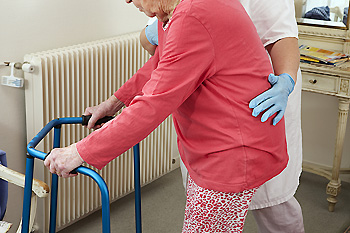
Research has shown that elderly people may be at risk for falling. This can be a result of existing medical conditions, and the body may become weak from the aging process. There are things that can be done which may help to reduce falling episodes. The home may need to be rearranged, which can include removing worn rugs and clutter from the living area and installing grab bars in the shower and toilet area. Additionally, it is beneficial to purchase a bed that is low enough for the feet to touch the floor while sitting on the edge. Performing a routine exercise program can help to strengthen the overall body, possibly reducing the number of falls. Falling may cause the patient to break a foot or a toe, which may lead to the inability to complete daily tasks. If you would like more information about how falling can affect the feet and how to implement additional prevention methods, please consult with a podiatrist.
Preventing falls among the elderly is very important. If you are older and have fallen or fear that you are prone to falling, consult with Dr. Steven Shlonsky from Louisville, Kentucky. Dr. Shlonsky will assess your condition and provide you with quality advice and care.
Every 11 seconds, an elderly American is being treated in an emergency room for a fall related injury. Falls are the leading cause of head and hip injuries for those 65 and older. Due to decreases in strength, balance, senses, and lack of awareness, elderly persons are very susceptible to falling. Thankfully, there are a number of things older persons can do to prevent falls.
How to Prevent Falls
Some effective methods that older persons can do to prevent falls include:
Falling can be a traumatic and embarrassing experience for elderly persons; this can make them less willing to leave the house, and less willing to talk to someone about their fears of falling. Doing such things, however, will increase the likelihood of tripping or losing one’s balance. Knowing the causes of falling and how to prevent them is the best way to mitigate the risk of serious injury.
If you have any questions, please feel free to contact our office located in Louisville, KY . We offer the newest diagnostic and treatment technologies for all your foot care needs.
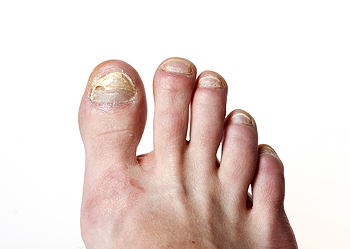
Athlete’s foot can certainly cause toenail fungus. While athlete’s foot can seem like a minor skin ailment, it can lead to more challenging complications if it affects toenails. Athlete’s foot is a fungus that grows on the soles of the feet and in between the toes. It can cause the skin on the feet to crack, peel, and become flaky. Sometimes it will become red and itch and there will be burning and stinging sensations. Toenail fungus grows under the nails and lives off skin and keratin. This erodes the protein in the nails causing them to turn dark yellow. The nails can also become brittle, push away from the nail bed, and emit an unpleasant odor. If athlete’s foot is not treated early, it can spread to the toenails. Given that either of these things can turn into a more severe infection, particularly among diabetics and those with other health conditions, it is a good idea to see a podiatrist for treatment at the first sign of a fungal infection.
If left untreated, toenail fungus may spread to other toenails, skin, or even fingernails. If you suspect you have toenail fungus it is important to seek treatment right away. For more information about treatment, contact Dr. Steven Shlonsky of Louisville, Kentucky. Dr. Shlonsky can provide the care you need to keep you pain-free and on your feet.
Symptoms
Treatment
If self-care strategies and over-the-counter medications does not help your fungus, your podiatrist may give you a prescription drug instead. Even if you find relief from your toenail fungus symptoms, you may experience a repeat infection in the future.
Prevention
In order to prevent getting toenail fungus in the future, you should always make sure to wash your feet with soap and water. After washing, it is important to dry your feet thoroughly especially in between the toes. When trimming your toenails, be sure to trim straight across instead of in a rounded shape. It is crucial not to cover up discolored nails with nail polish because that will prevent your nail from being able to “breathe”.
In some cases, surgical procedure may be needed to remove the toenail fungus. Consult with your podiatrist about the best treatment options for your case of toenail fungus.
If you have any questions, please feel free to contact our office located in Louisville, KY . We offer the newest diagnostic and treatment technologies for all your foot care needs.
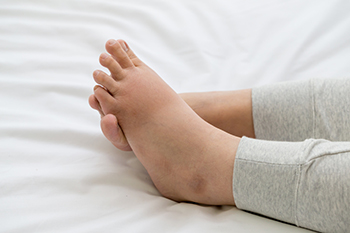
Swollen feet are a side effect that most pregnant women experience. The feet typically begin to swell in the second trimester and reach their peak during the last few weeks of pregnancy. This is a normal occurrence that happens when the blood becomes thicker, and the body produces more fluid to help support the growing baby. The excessive fluid will gradually decrease after the baby is born, but until that time, methods can be implemented which might help to ease the discomfort of swollen feet. These can include frequently elevating the feet, reducing caffeine intake, and drinking plenty of water daily. Many women who are pregnant during the summer may cool down by swimming or spending time in an air-conditioned room. If you have questions about how to alleviate swollen feet during pregnancy, please contact a podiatrist who can help you to feel more comfortable.
Pregnant women with swollen feet can be treated with a variety of different methods that are readily available. For more information about other cures for swollen feet during pregnancy, consult with Dr. Steven Shlonsky from Louisville, Kentucky. Dr. Shlonsky will attend to all of your foot and ankle needs.
What Foot Problems Can Arise During Pregnancy?
One problem that can occur is overpronation, which occurs when the arch of the foot flattens and tends to roll inward. This can cause pain and discomfort in your heels while you’re walking or even just standing up, trying to support your baby.
Another problem is edema, or swelling in the extremities. This often affects the feet during pregnancy but tends to occur in the later stages.
How Can I Keep My Feet Healthy During Pregnancy?
If you have any questions please feel free to contact our office located in Louisville, KY . We offer the newest diagnostic and treatment technologies for all your foot and ankle needs.

If you see a rough patch of skin on your toes or on the bottom of your feet, it may be a corn. Many corns develop on the pinky toe as a result of excessive friction that comes from wearing shoes that are too tight. A corn that forms on this toe can cause severe pain, despite its small size. Corns are defined as dead skin, surrounded by redness and inflammation. Two common categories of corns are referred to as hard and soft. The latter is found between the toes, as a result of the consistent moisture that collects from sweat. Hard corns can be found on the bottom of the feet, or on top of the toes. Mild relief may be found when a protective patch is worn over the corn, and this may help to prevent further pressure from friction. An effective preventive method consists of wearing shoes that fit correctly. If you have corns on your feet, please consult with a podiatrist who may recommend minor surgery for permanent removal.
If you have any concerns regarding your feet and ankles, contact Dr. Steven Shlonsky of Louisville, Kentucky. Dr. Shlonsky will treat your foot and ankle needs.
Corns: What Are They? and How Do You Get Rid of Them?
Corns can be described as areas of the skin that have thickened to the point of becoming painful or irritating. They are often layers and layers of the skin that have become dry and rough, and are normally smaller than calluses.
Ways to Prevent Corns
There are many ways to get rid of painful corns such as wearing:
Treating Corns
Treatment of corns involves removing the dead skin that has built up in the specific area of the foot. Consult with Dr. Shlonsky to determine the best treatment option for your case of corns.
If you have any questions please feel free to contact our office located in Louisville, KY . We offer the newest diagnostic and treatment technologies for all your foot and ankle needs.
Louisville Podiatry Office
149 Thierman Ln
Louisville,
KY 40207
Mon: 9:30 AM - 5:30 PM
Tues: 9:30 AM - 5:30 PM
Wed: 9:30 AM - 5:30 PM
Thur: 9:30 AM - 5:30 PM
Fri: 9:30 AM - 5:30 PM